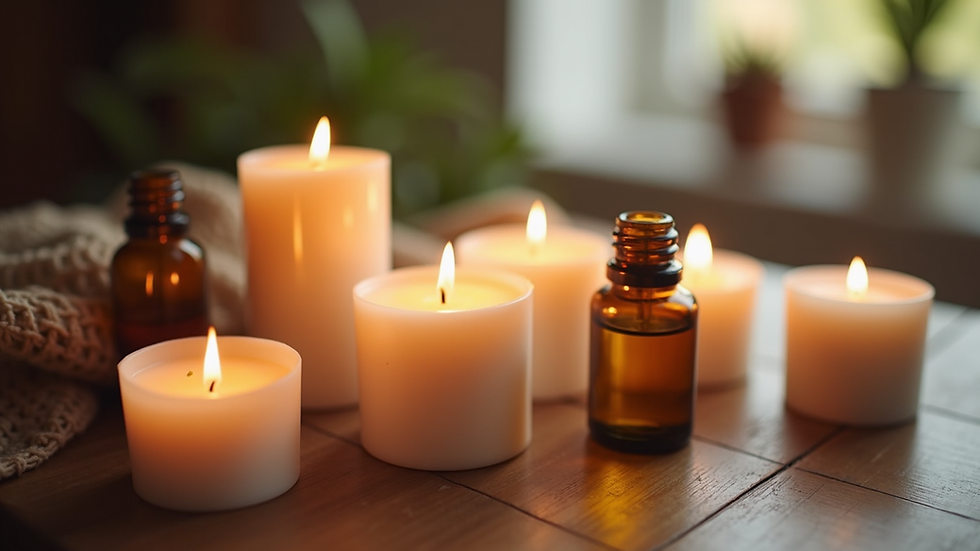The Art and Benefits of Traditional Thai Massage
- Nuad Thai Massage

- Jun 16
- 4 min read
Thai massage is an ancient healing technique that has gained popularity across the globe for its unique blend of yoga-like stretches, acupressure, and deep tissue work. Rooted in Buddhist practices, it has transformed over centuries to become a holistic approach to wellness. This post will explore the origins, techniques, and benefits of traditional Thai massage, while also highlighting how you can incorporate it into your wellness routine.
Understanding Thai Massage
Traditional Thai massage, known as "Nuad Bo-Rarn," is a system of therapeutic massage and assisted stretching. It combines elements of Ayurveda, acupressure, and yoga. Practitioners use their hands, feet, elbows, and knees to apply pressure to specific points on the body.
This ancient practice dates back over 2,500 years and remains deeply woven into Thai culture. Unlike Western massage methods that often focus on relaxation and muscle tension relief, Thai massage aims to balance energy along the body’s meridians, promoting overall health and spiritual well-being.

Benefits of Thai Massage
The benefits of traditional Thai massage extend far beyond mere relaxation. Here are some of the key advantages:
Body Flexibility and Functionality
One of the primary benefits of Thai massage is its ability to enhance flexibility. The combination of assisted stretches and pressure applied to specific muscle groups helps to improve range of motion. Regular sessions can result in more fluid movement and decreased stiffness.
Increased Flexibility: Many clients report improved flexibility in their daily activities, from simple tasks like bending down to more complex movements such as sports.
Posture Support: Better flexibility often leads to improved posture, which is essential for preventing long-term musculoskeletal issues.
Stress Relief and Mental Clarity
Thai massage also plays a crucial role in reducing stress and promoting mental clarity.
Stress Reduction: The rhythmic and soothing techniques used in Thai massage help to lower cortisol levels, decreasing stress and promoting relaxation.
Enhanced Focus: Mental clarity often follows a session, allowing individuals to tackle daily challenges more effectively.

Pain Relief and Rehabilitation
For those dealing with chronic pain, traditional Thai massage can serve as a therapeutic option.
Pain Management: By applying pressure to specific areas, it can alleviate neck, back, and joint pain, making it beneficial for those with conditions like arthritis or fibromyalgia.
Rehabilitation: This type of massage can aid in recovery from injuries by promoting circulation and reducing muscle tension.
Enhanced Circulation
The techniques utilized in Thai massage encourage better blood flow throughout the body.
Improved Circulation: This enhances oxygen and nutrient delivery to tissues, resulting in quicker recovery and increased energy levels.
Detoxification: Enhanced circulation also supports the body’s natural detoxification processes.
Techniques Used in Thai Massage
Understanding the techniques involved in Thai massage can provide insight into its effectiveness.
Pressure and Stretching
Thai massage heavily features acupressure and stretching.
Acupressure Techniques: Practitioners apply pressure to specific energy points along the body's meridians, which can alleviate pain and promote balance.
Assisted Stretching: The practitioner guides the client through various stretches, much like a yoga session. This helps open up the body and release muscle tension.
Breathing Coordination
Breathing plays an essential role in the effectiveness of Thai massage.
Conscious Breathing: Practitioners encourage clients to focus on their breath during the session. This mindfulness can deepen relaxation and improve the therapeutic effects.
Breath Synchronization: When movements are synchronized with breathing, the body releases tension more effectively, leading to a more profound state of relaxation.

How to Incorporate Thai Massage into Your Wellness Routine
Incorporating traditional Thai massage into your wellness routine can help enhance your overall well-being. Here are some actionable tips:
Find a Qualified Practitioner
Not all massage therapists are trained in Thai techniques. It's essential to find a practitioner who specializes in traditional Thai massage.
Look for certified therapists who have undergone proper training.
Check online reviews and testimonials to gauge their expertise.
Set Regular Appointments
Consistency is key when reaping the benefits of any wellness practice.
Schedule regular appointments, whether weekly or monthly, depending on your needs.
Consider pairing your massage sessions with other wellness activities, such as yoga or meditation for maximum benefits.
Embrace the Experience
Thai massage is not just about the physical benefits; it’s a holistic experience for body and mind.
If you’re visiting a spa, take time to enjoy the ambiance and relax before your session.
Allow yourself to be present during the massage, focusing on your breath and sensation.
For those looking for an authentic experience, you might want to check out nuad thai massage athens, which offers traditional techniques in a serene setting.
Final Thoughts on Thai Massage
Traditional Thai massage provides a unique blend of physical, mental, and spiritual benefits. Through its rich history and diverse techniques, it has emerged as a holistic practice that supports overall health and well-being.
Whether you’re seeking relief from chronic pain, looking to enhance flexibility, or simply want to unwind, Thai massage offers various options adapted to individual needs. Consider exploring this art form and integrating it into your lifestyle for a balanced approach to wellness.
Remember that wellness is a journey, and finding what works best for you may take time. Embrace each session with an open mind and a focus on the positive changes you experience in both your body and mind.
Incorporating traditional Thai massage into your routine could be a step toward a healthier, more balanced life.








Comments